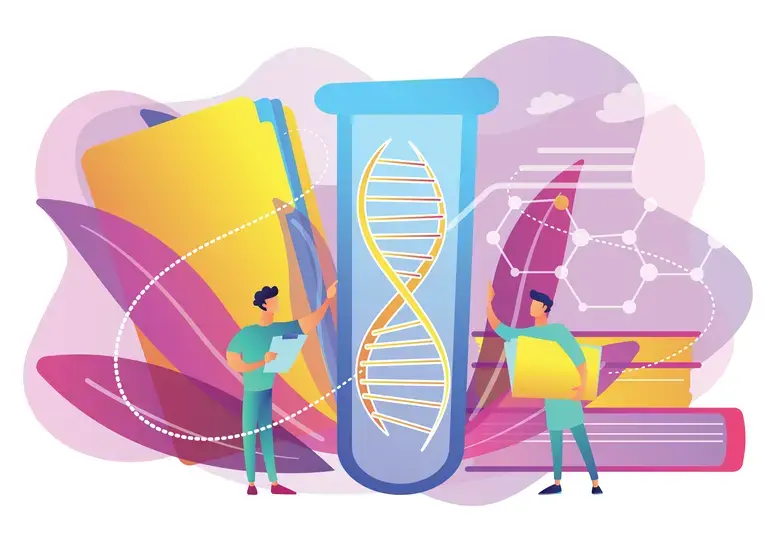1. Stovner LJ, Nichols E, Steiner TJ, et al. Global, regional, and national burden of migraine and tension-type headache, 1990–2016: a systematic analysis for the Global Burden of Disease Study 2016. Lancet Neurol. 2018;17:954–976.
2. Chowdhury D, Datta D. Managing Migraine in the Times of COVID-19 Pandemic. Ann Indian Acad Neurol [online serial]. Epub 2020.:33–39. Accessed at: https://www.ncbi.nlm.nih.gov/pmc/articles/PMC7213033/.
3. Stark R, Ravishankar K, Chiang Siow H, Soo Lee K, Pepperle R, Wang S. Chronic migraine and chronic daily headache in the Asia-Pacific region: a systematic review. CephalalgiaCephalalgia [online serial]. 2013;33:266–283. Accessed at: https://journals.sagepub.com/doi/abs/10.1177/0333102412468677.
4. Burch RC, Loder S, Loder E, Smitherman TA. The prevalence and burden of migraine and severe headache in the United States: Updated statistics from government health surveillance studies. Headache. 2015;55:21–34.
5. Dresler T, Caratozzolo S, Guldolf K, et al. Understanding the nature of psychiatric comorbidity in migraine: A systematic review focused on interactions and treatment implications. J Headache Pain. The Journal of Headache and Pain; 2019;20.
6. Lin Y-K, Liang C-S, Lee J-T, et al. Association of Suicide Risk With Headache Frequency Among Migraine Patients With and Without Aura. Front Neurol [online serial]. 2019;10. Accessed at: https://www.frontiersin.org/article/10.3389/fneur.2019.00228/full.
7. Bueno-Notivol J, Gracia-García P, Olaya B, Lasheras I, López-Antón R, Santabárbara J. Prevalence of depression during the COVID-19 outbreak: A meta-analysis of community-based studies. Int J Clin Heal Psychol [online serial]. Epub 2020 Aug.:135577. Accessed at: https://doi.org/10.1016/j.scitotenv.2019.135577.
8. Neurology A academy of. American academy of neurology position: telemedicine [online]. Accessed at: https://www.aan.com/policy-and-guidelines/policy/position-statements/te…. Accessed May 9, 2020.
9. Müller KI, Alstadhaug KB, Bekkelund SI. A randomized trial of telemedicine efficacy and safety for nonacute headaches. Neurology [online serial]. 2017;89:153–162. Accessed at: http://www.neurology.org/lookup/doi/10.1212/WNL.0000000000004085.
10. Müller KI, Alstadhaug KB, Bekkelund SI. Telemedicine in the management of non-acute headaches: A prospective, open-labelled non-inferiority, randomised clinical trial. Cephalalgia [online serial]. 2017;37:855–863. Accessed at: http://journals.sagepub.com/doi/10.1177/0333102416654885.
11. Qubty W, Patniyot I, Gelfand A. Telemedicine in a pediatric headache clinic. Neurology [online serial]. 2018;90:e1702–e1705. Accessed at: http://www.neurology.org/lookup/doi/10.1212/WNL.0000000000005482.
12. Wechsler LR, Tsao JW, Levine SR, et al. Teleneurology applications: Report of the telemedicine work group of the American Academy of Neurology. Neurology. 2013;80:670–676.
13. Russell C, Patterson V, Hu PJ, et al. " User satisfaction with realtime teleneurology. 1999;1222:1–15.
14. Wechsler LR. Advantages and limitations of teleneurology. JAMA Neurol. 2015;72:349–354.
15. Oskui M, Pringsheim T, Holler-Managan Y, et al. Practice guideline update: Acute treatment of migraine in children and adolescents. Am Acad Neurol. Epub 2019.
16. Update: Pharmacologic treatment for episodic prevention in adults. Am Acad Neurol. Epub 2012.
17. Szperka CL, Ailani J, Barmherzig R, et al. Migraine Care in the Era of COVID‐19: Clinical Pearls and Plea to Insurers. Headache J Head Face Pain [online serial]. 2020;60:833–842. Accessed at: https://onlinelibrary.wiley.com/doi/abs/10.1111/head.13810.
18. Dorosch T, Ganzer CA, Lin M, Seifan A. Efficacy of Angiotensin-Converting Enzyme Inhibitors and Angiotensin Receptor Blockers in the Preventative Treatment of Episodic Migraine in Adults. Curr Pain Headache Rep [online serial]. 2019;23:85. Accessed at: http://link.springer.com/10.1007/s11916-019-0823-8.
19. Boudreau, Grosberg B, McAllister P, Lipton R, Buse D. Prophylactic onabotulinumtoxinA in patients with chronic migraine and comorbid depression: An open-label, multicenter, pilot study of efficacy, safety and effect on headache-related disability, depression, and anxiety. Int J Gen Med [online serial]. Epub 2015 Feb.:79. Accessed at: http://www.dovepress.com/prophylactic-onabotulinumtoxina-in-patients-wi….
20. Zhang H, Zhang H, Wei Y, Lian Y, Chen Y, Zheng Y. Treatment of chronic daily headache with comorbid anxiety and depression using botulinum toxin A: a prospective pilot study. Int J Neurosci [online serial]. 2017;127:285–290. Accessed at: https://www.tandfonline.com/doi/full/10.1080/00207454.2016.1196687.
21. Maassenvandenbrink A, De Vries T, Danser AHJ. Headache medication and the COVID-19 pandemic. J Headache Pain. The Journal of Headache and Pain; 2020;21:1–4.
22. Ferrario CM, Jessup J, Chappell MC, et al. Effect of Angiotensin-Converting Enzyme Inhibition and Angiotensin II Receptor Blockers on Cardiac Angiotensin-Converting Enzyme 2. Circulation [online serial]. 2005;111:2605–2610. Accessed at: https://www.ahajournals.org/doi/10.1161/CIRCULATIONAHA.104.510461.
23. Wang X, Ye Y, Gong H, et al. The effects of different angiotensin II type 1 receptor blockers on the regulation of the ACE-AngII-AT1 and ACE2-Ang(1–7)-Mas axes in pressure overload-induced cardiac remodeling in male mice. J Mol Cell Cardiol [online serial]. 2016;97:180–190. Accessed at: https://linkinghub.elsevier.com/retrieve/pii/S0022282816301444.
24. Soler MJ, Ye M, Wysocki J, William J, Lloveras J, Batlle D. Localization of ACE2 in the renal vasculature: amplification by angiotensin II type 1 receptor blockade using telmisartan. Am J Physiol Physiol [online serial]. 2009;296:F398–F405. Accessed at: https://www.physiology.org/doi/10.1152/ajprenal.90488.2008.
25. Bobker SM, Robbins MS. COVID-19 and Headache: A Primer for Trainees. Headache. Epub 2020.:1806–1811.
26. Diener H-C, Holle-Lee D, Nägel S, et al. Treatment of migraine attacks and prevention of migraine: Guidelines by the German Migraine and Headache Society and the German Society of Neurology. Clin Transl Neurosci [online serial]. 2019;3:2514183X1882337. Accessed at: http://journals.sagepub.com/doi/10.1177/2514183X18823377.
27. Heckman BD, Holroyd KA, Himawan L, et al. Do psychiatric comorbidities influence headache treatment outcomes? Results of a naturalistic longitudinal treatment study. Pain [online serial]. 2009;146:56–64. Accessed at: http://journals.lww.com/00006396-200911000-00014.
28. Sorensen P, Larsen B, Rasmussen M, et al. Flunarizine versus metoprolol in migraine prophylaxis: a double-blind, randomized parallel group study of efficacy and tolerability. Headache [online serial]. 1991;31:650–657. Accessed at: https://pubmed.ncbi.nlm.nih.gov/1769820/.
29. Martin PR, Aiello R, Gilson K, Meadows G, Milgrom J, Reece J. Cognitive behavior therapy for comorbid migraine and/or tension-type headache and major depressive disorder: An exploratory randomized controlled trial. Behav Res Ther [online serial]. 2015;73:8–18. Accessed at: https://linkinghub.elsevier.com/retrieve/pii/S0005796715300127.
30. Luo C, Sanger N, Singhal N, et al. A comparison of electronically-delivered and face to face cognitive behavioural therapies in depressive disorders: A systematic review and meta-analysis. EClinicalMedicine [online serial]. 2020;24:100442. Accessed at: https://linkinghub.elsevier.com/retrieve/pii/S2589537020301863.




